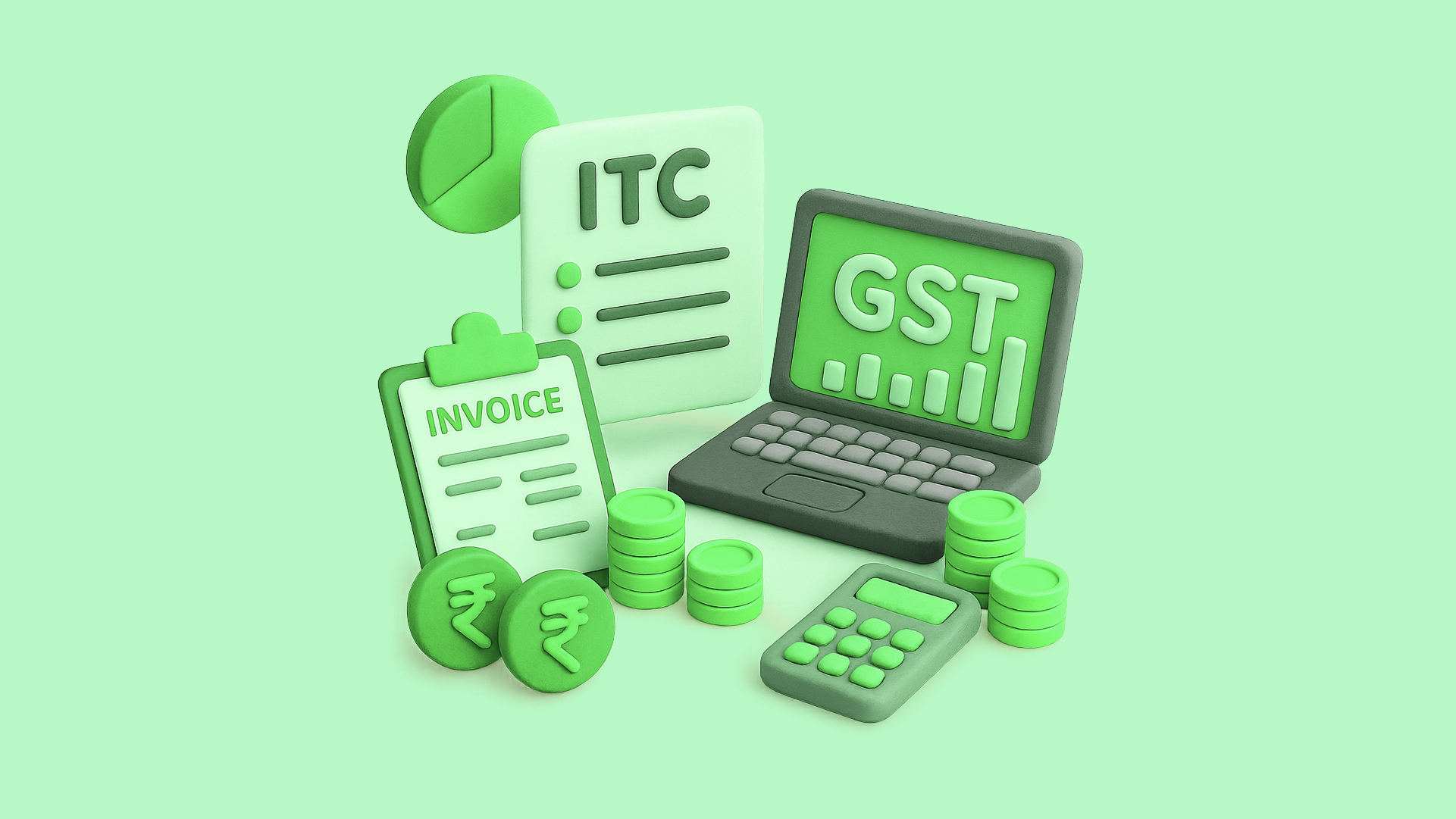When it comes to GST, Input Tax Credit (ITC) is more than just a compliance requirement. It’s a direct lever for managing cash flow, working capital, and risk exposure.
For businesses and finance teams, ITC management is about making sure every eligible rupee of tax paid comes back as credit – on time, without disputes, and without interest or penalties eroding margins. For CAs, it’s about ensuring clients don’t lose value due to preventable errors.
In this article, we’ll cut through the complexity to explain how to manage ITC in GST effectively, highlight common ITC mistakes that drain value, and share practical strategies on how to maximize GST input credit.
Why ITC Management Should Be on Your Radar
- Cash Flow Advantage: Every rupee of blocked or delayed ITC is cash locked up. Strong ITC discipline means smoother liquidity.
- Risk Mitigation: Incorrect claims or missed deadlines lead to interest, penalties, and notices that create financial and reputational risk.
- Efficiency: Manual reconciliations drain time from finance teams. Businesses that automate ITC save hundreds of man-hours each year.
Simply put, ITC is not a back-office task; it’s a finance strategy tool.
How to Manage ITC in GST
1. Strengthen Vendor Compliance
Your ITC is only as reliable as your supplier’s GST filings. If vendors don’t file GSTR-1 or GSTR-3B on time, your credits are at risk.
- Maintain a compliance scorecard for vendors.
- Prefer vendors with consistent filing behavior.
- Contractually include GST compliance obligations.
2. Anchor to GSTR-2B
Don’t risk credit on invoices that don’t reflect in your GSTR-2B. Make GSTR-2B the single source of truth for ITC claims.
- Book all expenses, but park non-2B invoices separately.
- Nudge suppliers proactively to upload missing invoices.
3. Watch the 180-Day Payment Rule
Delayed vendor payments mean ITC reversal after 180 days. That directly hits working capital.
- Finance + AP teams should track invoice ageing with GST impact in mind.
- Automate alerts for reversal deadlines.
4. Plan Around the November 30 Deadline
Every year, 30th November is the final cut-off to claim ITC for the previous financial year. Miss it, and that credit is gone forever.
- Treat October–November as your “ITC sprint” months.
- Lock internal timelines to clear mismatches well before the deadline.
5. Eliminate Blocked Credits at Source
Not all credits are eligible – motor cars, CSR spends, and personal consumption costs are classic examples.
- Finance teams should tag expense categories upfront to avoid wrongful claims. This prevents reversals during audits.
Common ITC Mistakes Businesses Make
- Claiming before it appears in GSTR-2B → Exposes you to reversals + interest.
- Ignoring supplier defaults → Rule 37A forces reversals if the supplier hasn’t filed GSTR-3B.
- Letting unpaid invoices pile beyond 180 days → Cash-flow pain + ITC reversals.
- Missing the November cut-off → Permanent loss of credit.
- Treating ITC as an afterthought → Last-minute reconciliations = higher risk.
Each of these mistakes has a common outcome: avoidable cash leakage.
How to Maximize GST Input Credit
- Vendor Selection with Compliance Lens: Partner with suppliers who file consistently.
- Tight AP & AR Integration: Align your payments process with GST rules.
- Monthly ITC Reconciliation: Treat it as a finance KPI, not just a compliance tick-box.
- Proactive Exception Management: Chase suppliers for missing invoices early, not at year-end.`
- Automation & Dashboards: Use tech to reduce manual effort and highlight risks instantly.
The Role of Technology in ITC Management
Managing ITC across multiple GSTINs, hundreds of invoices, and ever-changing rules is not scalable with Excel alone. Businesses and CA firms increasingly rely on automation platforms like Optotax to:
- Auto-match Books ↔ GSTR-2B ↔ GSTR-3B with exception buckets.
- Track supplier compliance (GSTR-1 & 3B filing, e-invoicing, defaults).
- Alert finance teams on 180-day reversals and deadlines.
- Simplify Rule 42/43 reversals for businesses dealing in both taxable & exempt supplies.
- Consolidate across GSTINs/clients into a single ITC view.
The result? Finance leaders get real-time visibility into ITC health, and CAs reduce manual reconciliations while protecting client value.
Conclusion
At its core, ITC is not just about compliance; it’s about protecting liquidity, strengthening financial control, and minimizing business risk. Companies that treat ITC as a strategic priority consistently see smoother cash flows, fewer disputes, and stronger compliance credibility.
For businesses and finance teams, the real question is: Are you capturing every eligible credit, on time, without leakage? If the answer is anything less than a confident yes, it’s time to rethink your ITC management approach and use the right systems to get there.





